Blog
Hydroxyl Generators: Making Deodorization Easier

Hydroxyl generators were first introduced to the restoration industry in the United States and Canada in 2008. Since this was a new technology, there was quite a bit of skepticism at first. After successful performance on many complex projects, the safety and efficacy of the technology was confirmed, and the use of these generators became widely accepted.
Hydroxyl generators work in a way that is most like ozone in the sense that they produce oxidizing gasses that break apart odour molecules. The two primary differences, however, are that hydroxyls are one million times more reactive than ozone, and they’re safe to use around people and sensitive materials. This means hydroxyls can eliminate a much broader range of odours and VOCs as compared to ozone. The technology allows contractors to run the generators while they’re performing their normal physical cleaning instead of afterward, and enables clients to stay in their home or business when possible.
This technology is a simpler process of deodorization as compared to other conventional methods. It stands alone, and does not require the use of chemicals, oils, masking agents, charcoal filters, sealants, or other procedures. Furthermore, no continued labor of spraying, fogging, wiping, etc. is necessary. Simply turn on the machines at the beginning of the project and the effectiveness will be immediately noticed. This will provide for a cleaner and fresher environment for both contractors and clients.
While there are different types of hydroxyl generators, those which utilize a high intensity ultraviolet light also bring the advantage of disassembling the odour molecules not just in the air, but more importantly, in the structure and contents where the odours have been adsorbed. The production of hydroxyl radicals, and a further chain of reactions throughout the treatment space, enables the elimination of odours in all areas where the odours have traveled.
Introduction to Bed Bugs
Introduction to Bed Bugs

The common bed bug (Cimex lectularius) has long been a pest – feeding on blood, causing itchy bites and generally irritating their human hosts. The Environmental Protection Agency (EPA), the Centers for Disease Control and Prevention (CDC), and the United States Department of Agriculture (USDA) all consider bed bugs a public health pest. However, unlike most public health pests, bed bugs are not known to transmit or spread disease.
They can, however, cause other public health issues, so it’s important to pay close attention to preventing and controlling bed bugs.
Experts believe the recent increase in bed bugs in the United States may be due to more travel, lack of knowledge about preventing infestations, increased resistance of bed bugs to pesticides, and ineffective pest control practices.
The good news is that there are ways to control bed bugs. Getting good, solid information is the first step in both prevention and control. While there is no chemical quick fix, there are effective strategies to control bed bugs involving both non-chemical and chemical methods.
Bed bugs can be hard to find and identify, given their small size and their habit of staying hidden. It helps to know what they look like, since the various life stages have different forms.
Appearance of Bed Bugs
(Cimex lectularius L.)

Adult bed bugs, in general, are:
- about the size of an apple seed (5-7 mm or 3/16 – 1/4 inch long);
- long and brown, with a flat, oval-shaped body (if not fed recently);
- balloon-like, reddish-brown, and more elongated (if fed recently);
- a “true bug” (characteristics of true bugs include a beak with three segments; antenna that have four parts; wings that are not used for flying; and short, golden-colored hairs); and
- smelly, with a “musty-sweetish” odor produced through glands on the lower side of the body.
Young bed bugs (also called nymphs), in general, are:
- smaller, translucent or whitish-yellow in color; and
- if not recently fed, can be nearly invisible to the naked eye because of coloring and size.
Bed bug eggs, in general, are:
- tiny, the size of a pinhead;
- pearl-white in color; and
- marked by an eye spot if more than five days old.
Bed Bug Life Cycle

The life cycle of a bed bug is shown in the photograph below. During its lifetime, a bed bug will go through the following stages (Starting from the top left, moving counterclockwise):
- Eggs (1mm).
- 1st stage nymph (1.5 mm).
- 2nd stage nymph (2 mm).
- 3rd stage nymph (2.5 mm).
- 4th stage nymph (3 mm).
- 5th stage nymph (4.5 mm).
- Unfed adult female.
- Unfed adult male.
How to Find Bed Bugs
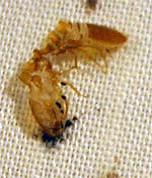
If you have an infestation, it is best to find it early, before the infestation becomes established or spreads. Treating a minor infestation, while an inconvenience, is far less costly and easier than treating the same infestation after it becomes more widespread.
However, low-level infestations are also much more challenging to find and correctly identify. Other insects, such as carpet beetles, can be easily mistaken for bed bugs. If you misidentify a bed bug infestation, it gives the bugs more time to spread to other areas of the house or hitchhike a ride to someone else’s house to start a new infestation.
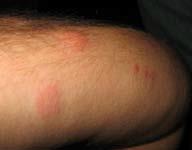
Bites on the skin are a poor indicator of a bed bug infestation. Bed bug bites can look like bites from other insects (such as mosquitoes or chiggers), rashes (such as eczema or fungal infections), or even hives. Some people do not react to bed bug bites at all.
For more information contact:
Patrick Martens
Alberta Fire and Flood
Asbestos
Asbestos: Dangers Lurking in Your Home
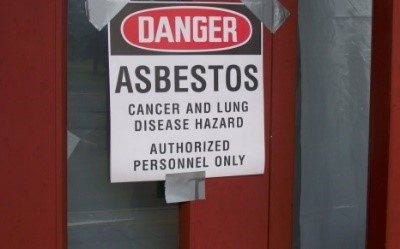

Asbestos has become widely popular across the nations after the World War II. However, after various studies carried out by many experts for many years, asbestos now falls into the hazardous building materials category. Some of the old buildings still have asbestos and asbestos abatement is a very serious task to handle.
Health Hazards Associated with Asbestos Usage
In fact, asbestos is not that harmful when they are in good condition. However, when the deterioration starts, the microfibers of asbestos becomes airborne and that is when the real problem starts. These fibers are hardly visible and they can easily enter the respiratory system though the air we inhale. Upon a vibration or a windy situation, the spread of the fibers can be increased. Lung cancer, asbestosis and mesothelioma are among the common health issues you would come across after inhaling asbestos contaminated air for a long time.
Making things even worse, symptoms pertaining to these diseases may not even appear for many years. Moreover, recent studies show that the exposure to asbestos may trigger health issues such as breast, prostate, ovarian or laryngeal cancers.
Which Method Is Better? DIY Or Hiring a Professional Service?
For obvious reasons, you need to hire a professional for the asbestos abatement process. Handling hazardous building materials is not something you should do unless you have a lot of experience and professional qualifications. Trying to remove asbestos without proper methodology will cause damages to the materials and eventually you and your neighbors could be exposed to a more hazardous situation. A task like asbestos abatement demands special protective clothing, safety precautions and equipment. After all, you shouldn’t compromise the safety of your family over saving money.
Things to Consider When Hiring an Asbestos Contractor
Hiring the right kind of company is exceptionally important when you need to remove the asbestos. Here are some things to consider when finding the best out of the rest. Also, make sure that you don’t let anyone enter the area until the work is completed.
- Start by doing the comparisons. You should be wise enough to check with the customer reviews. Ask for quotations from the contractors and compare them. Your quotations should include information pertaining to the entire job including removal and disposal of the asbestos.
- If necessary, you can check with the BBB (Better Business Bureau) for the background of the respective company.
- Your contractor must have adequate insurance coverage. It should specifically cover the asbestos-related claims
- See if the contractor is willing to sign a written contract before the commencement. Without a contract, you cannot start the work and you shouldn’t rely on verbal contracts or estimates under any circumstances.
- See if the contractor is ready to offer copies of lab reports pertaining to the job
Be sure to communicate with the contractor and understand the abatement process. If you have any doubts, you have the right to question them and be 100% confident that they will complete the asbestos abatement process safely and follow the government regulatory procedures.
For more information on this and other safety topics contact:
Patrick Martens B.Sc. (Hons.); B.Ed.; M.A.
Health and Safety Manager
Alberta Fire and Flood
DEVELOPING AND MAINTAINING STAFF COMPETENCE
Introduction
________________________________________
At Alberta Fire and Flood, education and training for our staff: clients and customers have risen to the top of our list for corporate commitment now and in the future. The applied learning seminars that we have developed are competency-based and focus on the critical tasks associated with the restoration industry. In April, May and June we had over 500 students take our industry based seminars.
Key Measure of Competency Management: Employee Performance
________________________________________
The dominant metric that top performing organizations seek to impact with their competency management strategy is employee performance. When calculating employee performance, most companies tend to focus on rating job-specific performance reviews and percent of goals attained.
Figure 1: How Top Companies Measure Employee Performance
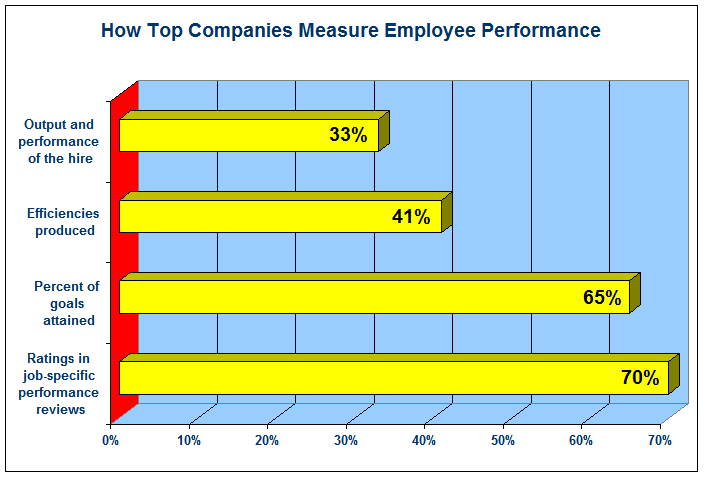
(Survey from: Skills for Business network of 25 Sector Skills Councils)
Learning and Development
________________________________________
As outlined in figure 1, the top performers measure employee performance primarily based on ratings from job-specific performance reviews and percent of goals attained. The top performers also recognize that aligning learning and development with organizational priorities is critical to aiding employees in their overall performance improvement.
Definition: What is a Competency?
________________________________________
The International Board of Standards for Training, Performance and Instruction (ibstpi) defines competencies as:
“A set of related Knowledge, Skills and Attitudes that enable an individual to effectively perform the activities of a given occupation or job function to the standards expected in employment.”
As defined by ibstpi, competency is related to performance on a job and can be measured against commonly accepted standards. The approach combines several points of view concerning competencies including a collection of knowledge, skills, attitudes, a collection of job tasks, and the qualities that identify superior performers that can be measured reliably. The ibstpi competencies are statements of performance, not personality traits or beliefs. Furthermore, there is an implication that competency can be developed through training and instruction. That is not true, as training does not ensure competency.
A simple model of the components of competence could be expressed as shown below.
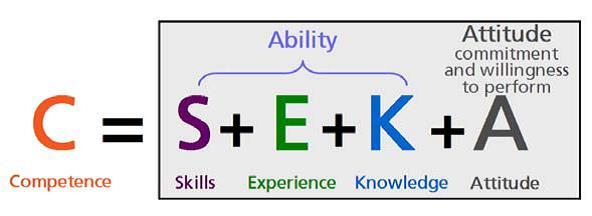
Relationship between risk assessment, training and competency assessment
________________________________________
The design of competency management systems starts with an analysis of the tasks performed by the worker i.e. asbestos abatement. Although this is a common feature of many training needs analysis methodologies, the approach for competency management differs in that the hazards associated with these activities are then identified and the risks assessed in terms of frequency of occurrence and severity of consequence. This risk assessment process leads to the development of risk-based standards that define what ‘competent performance’ is and how this would be demonstrated in the workplace. Once the competence standards have been developed they become the reference for all organizational activities that require some measurement of human performance.
How are workers assessed?
________________________________________
A qualified assessor will observe a worker and question them about the work they are currently doing. The assessor will test their knowledge and understanding as well as their performance. The assessor will ‘sign-off’ individual competencies within the occupational profile when they have reached the required standard.
The worker will be assessed as being either ‘competent’ or ‘not yet competent’. Workers requiring additional training will be directed to the competency-based on-line training seminars to fill in the missing gap(s) in their profile(s).
A competent worker is a safe worker and a high performing worker.
